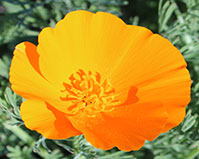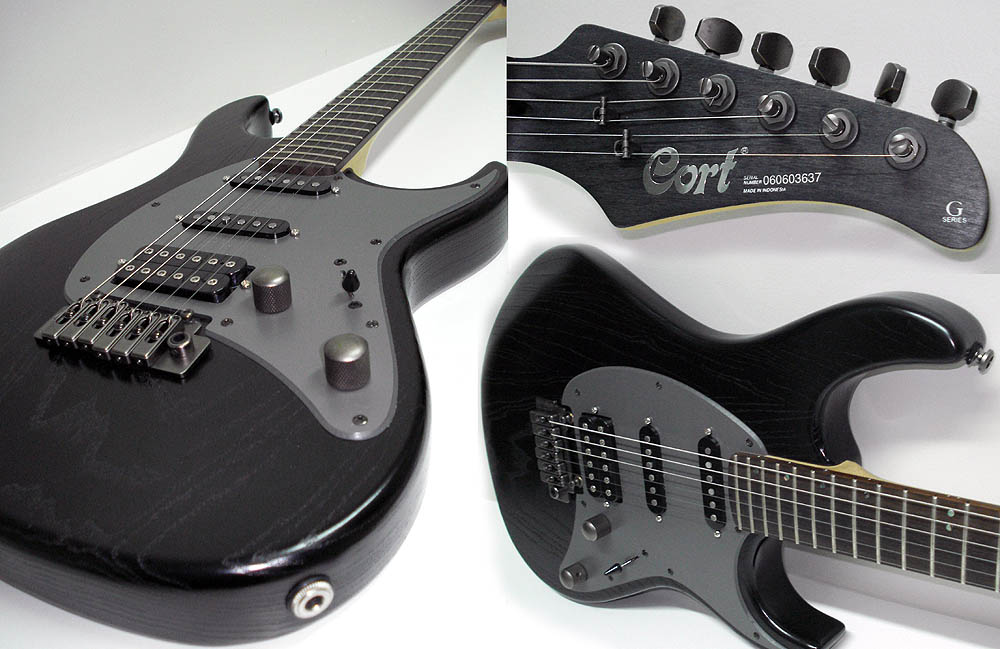This is basically a tedious strings thread, but for awesome people who like to tune low.
Basically, my Zakk Wyldes aren't quite satisfying because I want to tune further than C, all the way down to A and the lowest string (a .060 for those not in with the cool kids) isn't tight enough. So I know the solution is to get a higher gauge, HOWEVER I'd just like to share an observation from my adventures in downtuning over the years. I've found that while tuning low reduces tension (obviously) it's often not very uniform across the strings. In fact, I've found that while I really, really miss the tension in the lowest two strings it doesn't remotely bother me when the higher strings go a bit floppy. The Zakk Wylde set goes from 010 to 060 with a fairly big jump in gauge from the G to the D (can't remember off the top of my head), so you have basically the usual plain strings from a set of regular 10s but then the gauge jumps quite far so your A string is actually a 52 I think, which is usually the gauge of a low E in a set of heavy bottom 10s, topped off with the .060 at the bottom.
Currently, my guitar is tuned to B-standard and I honestly don't mind the loss of tension in the high E and B, while the G is definitely rather weak and doesn't hold tuning very well. However, the D and A strings are fine, while the E is getting loose. I'm starting to think that to tune down to A I might drop the E to a .066, the G to a wound string of maybe .018 or so and see how it goes tuning down to A.
This might all seem odd considering I just bought a baritone that is currently tuned up to B anyway, but hey! It isn't a metal guitar, and my Nu Sonic effectively is so y'know.
Low tuning observations. Probably boring.
Moderated By: mods
Low tuning observations. Probably boring.

Brandon W wrote:you elites.
There used to be a GHS set of 70-11 for Zakk Wylde, then the bitch switched companies and took his low string to the 60.
GHS still makes the 70-11 set, without his name. in my experience, That's been the best for baritoning, both 25.5" and 28 5/8" scales. I hear you on the high strings. they seem to have a much broader "acceptable tension" range. Ive gone as light as an 11 for my high A on a baritone.
GHS still makes the 70-11 set, without his name. in my experience, That's been the best for baritoning, both 25.5" and 28 5/8" scales. I hear you on the high strings. they seem to have a much broader "acceptable tension" range. Ive gone as light as an 11 for my high A on a baritone.
High quality, low popularity Ecstatic Fury
I don't know if this will help, but I found some interesting points on THIS site.
I was asking about restringing an S-100 on another forum and someone pointed me here. Can't remember if the strings will go low enough, but it's basically a guy designing stings to the right tension. He's quite opinionated....
I put 13's on my acoustic as I play that the most, and figure I should get a 'work out'. Wait till you see what he says about his 13's for acoustics....
I was asking about restringing an S-100 on another forum and someone pointed me here. Can't remember if the strings will go low enough, but it's basically a guy designing stings to the right tension. He's quite opinionated....
I put 13's on my acoustic as I play that the most, and figure I should get a 'work out'. Wait till you see what he says about his 13's for acoustics....
Also, just thinking, have you thought about flat wounds? I put a set on my S-100 and that's why I asked the string question. I'm sure I put flat wound 11's and the tension was too much. Action all out, horrible to play and the strings were tighter than a tight thing that is tight.
I might have a set of flat wound 12's I could send you if you're in the UK. I'm not putting these fuckers anywhere near my guitars! Will have to check though.
I might have a set of flat wound 12's I could send you if you're in the UK. I'm not putting these fuckers anywhere near my guitars! Will have to check though.
If it helps Ek, I used to use D'addario strings on a 25.5 tuned to Drop A (A,G,C,F,A,D). A quick search shows that they are still there - maybe you should check these out?
THESE MACADEMIAS
THESE MACADEMIAS

Ah yes, the 11-70 Zakks. I wasn't sure if they still made them but it seems Hot Rox do stock them. Rhys, I was looking at the Bass VI strings for my Gretsch a while ago anyway, though I'm holding out for a set of Fender Bass VI strings popping up at some point (which, in their infinite wisdom they have discontinued). I don't think I want to go as high as an 84 on a 25.5 though!
For the Gretsch (slightly off on a tangent) I found a set of strings made specifically for the Gretsch by Pyramid strings, but they have a jump from 64 or so for the A up to 95 for the E instead of a smoother transition like the Fender strings which have a 75 for the A.
For the Gretsch (slightly off on a tangent) I found a set of strings made specifically for the Gretsch by Pyramid strings, but they have a jump from 64 or so for the A up to 95 for the E instead of a smoother transition like the Fender strings which have a 75 for the A.

Brandon W wrote:you elites.
Interesting thrad, I've been waiting for something like this to post my thoughts.
The above mentioning of lack of uniformity is something that plagued my experiment last month. Sure, tuning the Jazzmaster down to C# was amazing and resulted in some amazing tones (the Shortscale "Birth Year Comp" I did songs by the Carpenters and T.Rex), but going lower can really put the meat on the bones. Flabbing about with my Epiphone Les Paul 7 string has been on my mind a lot this month, so I wanted to see if I could actually do a cheaper alternative on a 25.5" scale supa strat.
Conclusion first : I'm probably doing something wrong, and have decided to keep the Les Paul.
Exhibit A: Cort G260

This is Korea. Corts are everywhere, and the Indonesian-made ones are especially affordable, the above transparent ash blackie obtained for about $120 and in near-mint shape. The 25.5" scale, sturdy medium-thick "C" neck, and coil taps on the bridge humbucker were the three main reasons I wanted one in particular. My plan was to do a low-tuned AEADGB guitar (and sell my LP7, if it worked), but I didn't take into account a number of variables that made it not work. Here's what happened:
- The Wilkinson 2-point trem is fine, but not for the load I needed, so I had to block it when strung up. No biggie.
- Locking tuners won't fit anything over .60, from what I tried. Had to slightly de-thread the low string to somehow anchor it.
- Used the lower 5 strings from a set of D'adadadareo 11-49s and carefully polished the nut grooves to accomodate the lower three.
- Although it sounded fat and tight with a .70 low string tuned to A (identical to what I use on the LP-7), within 10 minutes the neck began to warp from the bass-side tension.
- Tried to work with the truss rod for a bit, but to no avail. A normal set of strings was immediately put on, saddles adjusted, and it's working better as a "normal" guitar.
- Giving away the guitar to my friend from Costa Rica next week.
This made me rethink the LP7, its massive neck, and how the scale length can better work with a set of fat strings.
In conclusion, I'm eating my words and learning my lesson: I'm going to keep it and get a proper vintage-wound 7-string humbucker for the bridge position and simply learn to play "lighter". It's not all that bad.
And for those who might be interested, here's kind of what brainless powerchords tuned AEADGBE on the Epiphone Les Paul 7 string sound like live from one of the first of the 20 small gigs I did last year with Seungwhan Lee. Listen from about 1:40 to hear the classic "Hey Jude" progression in the fat key of E.
Kindly excuse my cheapo camera's horrible mono microphone, the "Nancy Wilson kick" at 3:50, the very out of tune Yamaha SG...and my fat ass.
[youtube][/youtube]
The above mentioning of lack of uniformity is something that plagued my experiment last month. Sure, tuning the Jazzmaster down to C# was amazing and resulted in some amazing tones (the Shortscale "Birth Year Comp" I did songs by the Carpenters and T.Rex), but going lower can really put the meat on the bones. Flabbing about with my Epiphone Les Paul 7 string has been on my mind a lot this month, so I wanted to see if I could actually do a cheaper alternative on a 25.5" scale supa strat.
Conclusion first : I'm probably doing something wrong, and have decided to keep the Les Paul.
Exhibit A: Cort G260

This is Korea. Corts are everywhere, and the Indonesian-made ones are especially affordable, the above transparent ash blackie obtained for about $120 and in near-mint shape. The 25.5" scale, sturdy medium-thick "C" neck, and coil taps on the bridge humbucker were the three main reasons I wanted one in particular. My plan was to do a low-tuned AEADGB guitar (and sell my LP7, if it worked), but I didn't take into account a number of variables that made it not work. Here's what happened:
- The Wilkinson 2-point trem is fine, but not for the load I needed, so I had to block it when strung up. No biggie.
- Locking tuners won't fit anything over .60, from what I tried. Had to slightly de-thread the low string to somehow anchor it.
- Used the lower 5 strings from a set of D'adadadareo 11-49s and carefully polished the nut grooves to accomodate the lower three.
- Although it sounded fat and tight with a .70 low string tuned to A (identical to what I use on the LP-7), within 10 minutes the neck began to warp from the bass-side tension.
- Tried to work with the truss rod for a bit, but to no avail. A normal set of strings was immediately put on, saddles adjusted, and it's working better as a "normal" guitar.
- Giving away the guitar to my friend from Costa Rica next week.
This made me rethink the LP7, its massive neck, and how the scale length can better work with a set of fat strings.
In conclusion, I'm eating my words and learning my lesson: I'm going to keep it and get a proper vintage-wound 7-string humbucker for the bridge position and simply learn to play "lighter". It's not all that bad.
And for those who might be interested, here's kind of what brainless powerchords tuned AEADGBE on the Epiphone Les Paul 7 string sound like live from one of the first of the 20 small gigs I did last year with Seungwhan Lee. Listen from about 1:40 to hear the classic "Hey Jude" progression in the fat key of E.
Kindly excuse my cheapo camera's horrible mono microphone, the "Nancy Wilson kick" at 3:50, the very out of tune Yamaha SG...and my fat ass.
[youtube][/youtube]
Done it.
I was originally going to order single strings from Stringbusters but found a "light" 8-string set for about £7 that came with most of the strings I wanted. I bagged it. The gauges included were: .009 .011 .016 .024 .032 .042 .054 .065
I used the following, from the highest to the lowest: .011 .016 .024 .042 .054 .065, tuned to A standard.
It's quite a jump from the .024 to the .042, and I'm thinking I probably should have gone down to a .038 or the .036 that I'd been using with the Zakk Wylde strings. Pretty much all of the pressure is on the .042 and .054. They're both gauges you might find in a regular or heavy bottom sets of strings, tuned to E but in this case tuned down to D (.054) and G (.042) so I think in this case the .042 has been tuned up by three frets... I hadn't thought of that beforehand. But all I had was the .032 from the 8 string set which I thought might be too light. I might take the .042 off later and replace it with that.
The top strings are interesting. The G (C.. confused yet?) works fantastically well as a wound string and the gauge isn't much higher than the original plain string that had gone unusably floppy, so bends are still quite easy. Moving the .013 B (E) and .010 E (A) up to the .016 and .011 respectively has given them much more tension than I would have expected. It's worth bearing in mind that you really only need to go a few points here or there to change the tension of a plain string, whereas wound strings need a few extra points before noticable differences creep in. Going from the .060 to the .065 has been great. But I imagine that the Zakks might still work fine with just two extra string replacements; the .065 low string and the .024 wound G (C).
Now none of you have any excuse not to start playing stupidly downtuned heavy stoner rock. Well, alright, some of you already do. Whatever.
I was originally going to order single strings from Stringbusters but found a "light" 8-string set for about £7 that came with most of the strings I wanted. I bagged it. The gauges included were: .009 .011 .016 .024 .032 .042 .054 .065
I used the following, from the highest to the lowest: .011 .016 .024 .042 .054 .065, tuned to A standard.
It's quite a jump from the .024 to the .042, and I'm thinking I probably should have gone down to a .038 or the .036 that I'd been using with the Zakk Wylde strings. Pretty much all of the pressure is on the .042 and .054. They're both gauges you might find in a regular or heavy bottom sets of strings, tuned to E but in this case tuned down to D (.054) and G (.042) so I think in this case the .042 has been tuned up by three frets... I hadn't thought of that beforehand. But all I had was the .032 from the 8 string set which I thought might be too light. I might take the .042 off later and replace it with that.
The top strings are interesting. The G (C.. confused yet?) works fantastically well as a wound string and the gauge isn't much higher than the original plain string that had gone unusably floppy, so bends are still quite easy. Moving the .013 B (E) and .010 E (A) up to the .016 and .011 respectively has given them much more tension than I would have expected. It's worth bearing in mind that you really only need to go a few points here or there to change the tension of a plain string, whereas wound strings need a few extra points before noticable differences creep in. Going from the .060 to the .065 has been great. But I imagine that the Zakks might still work fine with just two extra string replacements; the .065 low string and the .024 wound G (C).
Now none of you have any excuse not to start playing stupidly downtuned heavy stoner rock. Well, alright, some of you already do. Whatever.

Brandon W wrote:you elites.


